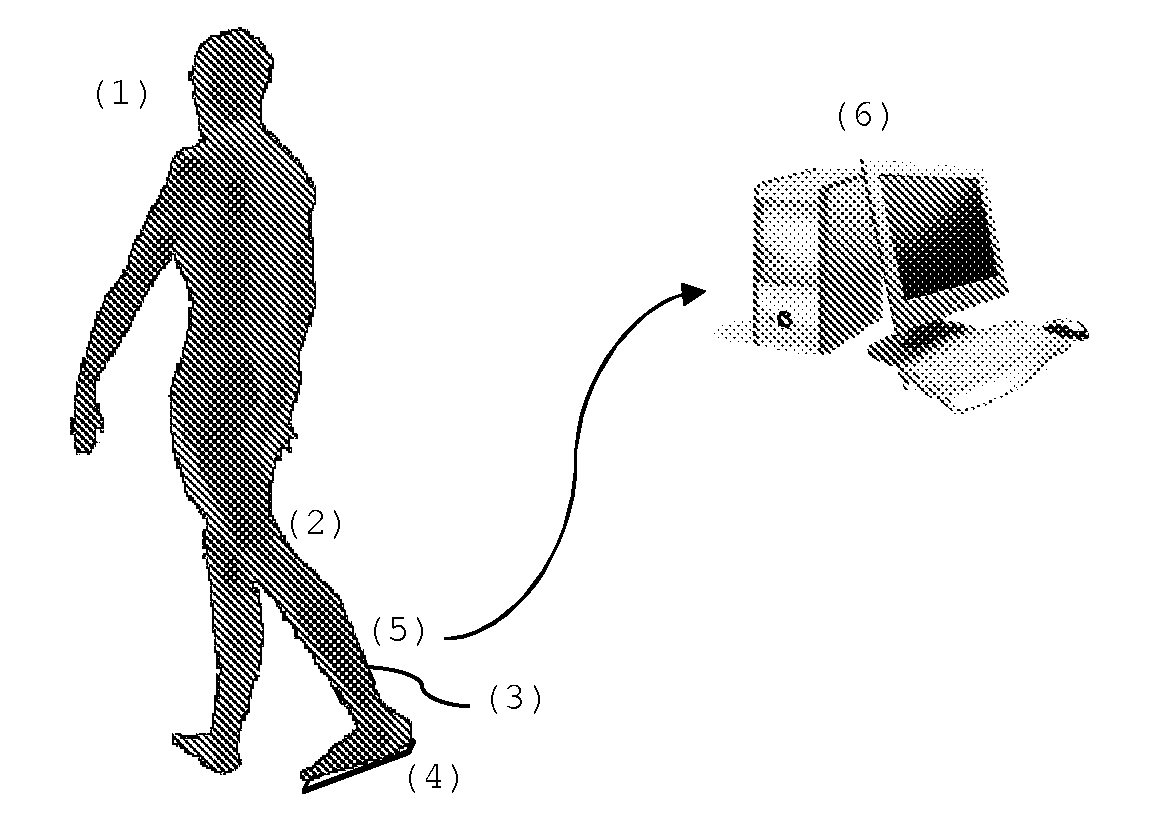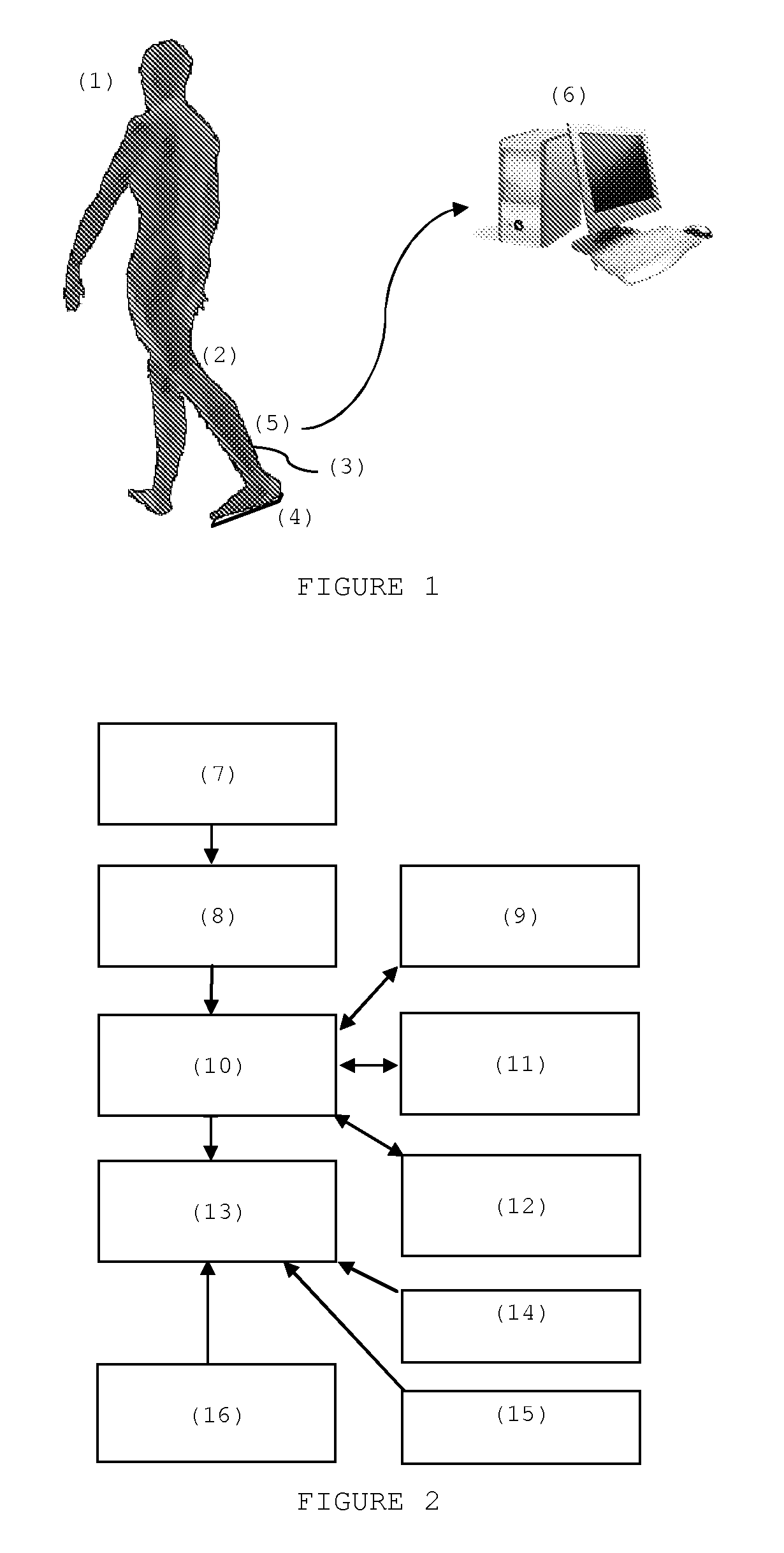Portable device and method for measurement and calculation of dynamic parameters of pedestrian locomotion
a technology of dynamic parameters and portable devices, applied in the direction of distance measurement, instruments, applications, etc., can solve the problems of reducing reliability and limited functionality, affecting the effect of the measurement, and affecting the accuracy of the measurement results, so as to achieve the effect of traveling
- Summary
- Abstract
- Description
- Claims
- Application Information
AI Technical Summary
Benefits of technology
Problems solved by technology
Method used
Image
Examples
Embodiment Construction
[0065]The invention disclosed herewith is composed of a portable autonomous device and a method that embodies it.
[0066]The device consists in an electronic circuit, depicted in FIG. 2, containing as fundamental components at least two accelerometers (14) preferably oriented parallel to a plane of movement (18) and with orthogonal sensing axis; one gyroscope (15) whose sensing axis is preferably perpendicular to the same plan of movement; a minimum set of at least two force sensors (16) to measure the plantar pressure in strategic points on the contact surface of the lower limb (17) with the ground; one processing module (10) composed by a microprocessor and signal conditioning and conversion circuits (13) and communication with the outside, performed preferably by a wireless communication module (11) or wired communication module (e.g. serial communication) (12) and one energy supply module (7), embodied, for example, by a battery preferably rechargeable. The device may additionally...
PUM
 Login to View More
Login to View More Abstract
Description
Claims
Application Information
 Login to View More
Login to View More - R&D
- Intellectual Property
- Life Sciences
- Materials
- Tech Scout
- Unparalleled Data Quality
- Higher Quality Content
- 60% Fewer Hallucinations
Browse by: Latest US Patents, China's latest patents, Technical Efficacy Thesaurus, Application Domain, Technology Topic, Popular Technical Reports.
© 2025 PatSnap. All rights reserved.Legal|Privacy policy|Modern Slavery Act Transparency Statement|Sitemap|About US| Contact US: help@patsnap.com



